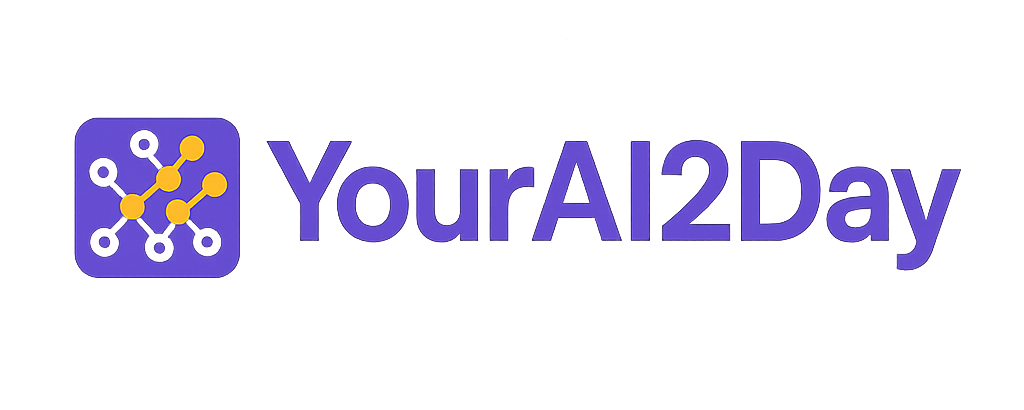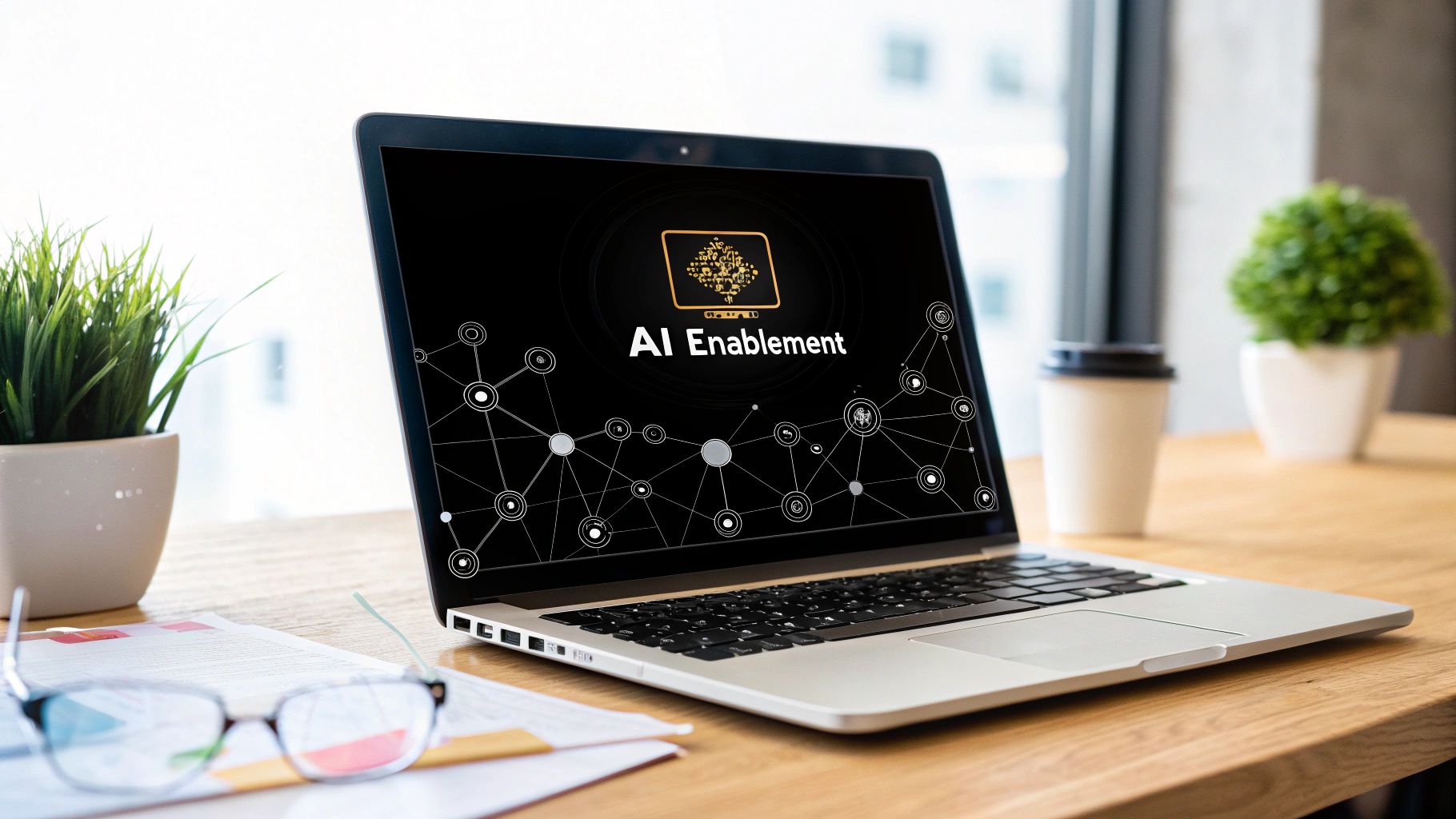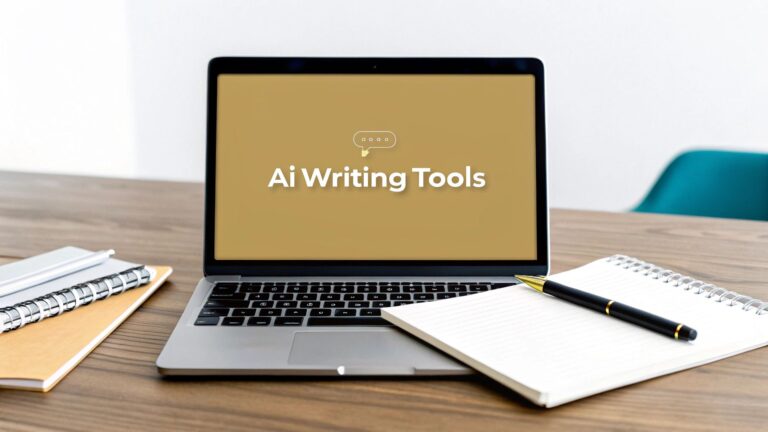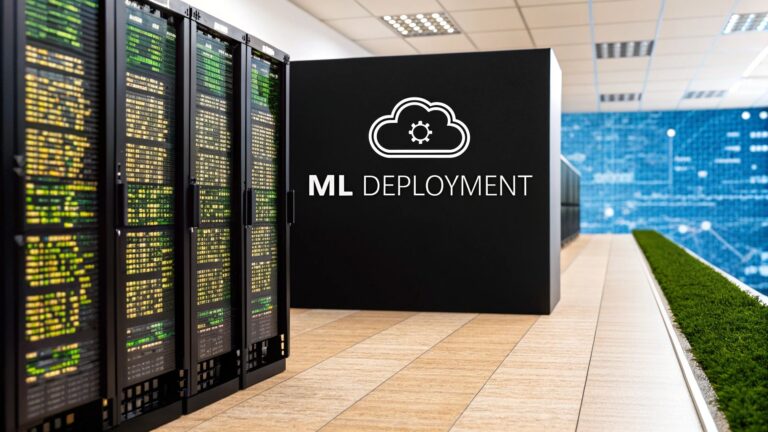A Practical Guide to Artificial Intelligence Enablement
You've probably seen it happen. One company rolls out a fancy new AI tool and sees incredible results, while another invests in the exact same software and gets… well, crickets. The difference isn't the technology. It's artificial intelligence enablement.
So, what is this magic ingredient that separates the success stories from the expensive failures? Let's dive in and break it down in a way that makes sense, even if you're new to the world of AI.
What Is AI Enablement Anyway?

AI enablement isn't about buying software. It's the strategic, foundational work you do to prepare your entire organization—your people, your daily processes, and your tech—to actually succeed with artificial intelligence.
Think of it like getting ready to run a marathon. You don't just buy a cool pair of running shoes and show up on race day expecting to win. You train for months. You get your diet right. You figure out your pacing. AI enablement is that training regimen for your business. It's all the essential groundwork that ensures your AI investments actually pay off.
Without it, even the most powerful AI solution becomes an expensive, complicated tool that nobody knows how to use properly.
It's a Strategy, Not Just a Shopping List
One of the biggest pitfalls I see is companies treating AI adoption like a simple IT purchase. True AI enablement is a company-wide initiative that balances three crucial pillars:
- People: This is all about upskilling your teams and fostering the right mindset. Are your employees excited or scared? You need to provide training, get buy-in from the top down, and help everyone see AI as a helpful co-pilot rather than a threat to their job.
- Processes: Take a hard, honest look at your current workflows. Where are the bottlenecks? What repetitive tasks are eating up valuable time? This is where you identify the specific, high-impact problems that AI can solve, rather than just sprinkling it around for the sake of it.
- Platform: This is the tech part—the software, the cloud infrastructure, and, most importantly, the data. Your data has to be clean, organized, and accessible. As an expert would say, "AI models are only as good as the data they're fed," so this step is absolutely non-negotiable.
When you bring all three of these elements together, you create an environment where AI doesn't just exist; it truly thrives.
As technology strategist, Dr. Alistair Crane, often says, "Enablement is the missing link in most AI adoption strategies. Without it, even the most advanced platforms fall flat. Employees need more than access; they need the skills, confidence, and support to use AI effectively."
Let’s Make It Real: Enablement in Action
Imagine a marketing team wants to start using AI to personalize email campaigns. Just handing them a login to a new AI platform is a recipe for failure.
Here’s what a proper enablement approach would look like:
- The People: Instead of a generic "how-to" session, the team gets specific training on why this tool matters. For example, they learn how to interpret its suggestions for customer segments and see firsthand how it can free them up to focus on creative strategy instead of spending hours manually crunching data.
- The Process: Their whole campaign planning process gets a refresh. They no longer start with guesswork. The new first step is to run an AI analysis to uncover high-potential customer groups they might have missed before, like "customers who bought product A but not the complementary product B."
- The Platform: Before anything else, the company works to unify its customer data. Information from the CRM, website analytics, and sales records are cleaned up and integrated, giving the AI a reliable, complete picture to work from.
See the difference? This holistic approach ensures the AI tool is used effectively, leading to better campaign performance and a more capable team. That’s the real power of artificial intelligence enablement.
The Three Pillars of a Strong AI Enablement Framework
Getting AI to work for your business isn't about just plugging in a new piece of software. Real, sustainable AI enablement is built on three essential pillars: People, Process, and Platform. It’s a lot like a three-legged stool—if you neglect one leg, the entire structure becomes wobbly and unreliable.
Let's look at how these three pillars work together to create a solid foundation for bringing AI into your company.
People: The Cultural Foundation
You can have the most powerful AI in the world, but it’s worthless if your team doesn't know how, or why, they should use it. This is why the People pillar is where everything starts. It’s all about creating a culture where people are curious about AI, not afraid of it.
This journey has to begin with genuine leadership buy-in. When executives are actively using AI tools in their own work and talking about the benefits, it sends a clear message to everyone else: this is a core part of our strategy, not just another passing fad.
From there, you have to invest in upskilling and training. This is more than just technical walkthroughs. It's about showing employees how AI can specifically make their day-to-day work easier and more impactful. For a sales team, this could be a hands-on workshop with a tool that predicts which leads are most likely to convert, letting them focus their energy where it counts.
Finally, you have to tackle the very real human side of this change. Be open about concerns over job security. Frame AI not as a replacement, but as a "co-pilot" that can take over tedious, repetitive tasks, freeing up your team for the creative and strategic thinking that humans do best.
Process: The Operational Blueprint
Once your people are on board, it's time to look at your existing workflows. The Process pillar is all about weaving AI into how your business already runs, not forcing everyone to adopt clunky, unfamiliar procedures.
Start by identifying high-impact opportunities for automation. Where are the bottlenecks? What manual tasks are eating up everyone's time? For a customer service department, an AI chatbot could handle routine questions like "Where's my order?", which lets human agents focus on solving more complex, high-stakes customer problems.
It's also crucial to establish clear governance from the start. This means creating rules for how AI tools are used, who's accountable for them, and how you'll protect data privacy and maintain ethical standards. This isn't just about bureaucracy; it’s about building trust and preventing major missteps later on.
According to organizational change expert Dr. Anya Sharma, "AI adoption fails when it's treated as a destination. Success comes from treating it as a new way of traveling—you have to update your map, retrain your drivers, and set new rules of the road."
Platform: The Technological Engine
The final pillar is the Platform—the actual technology that powers your AI initiatives. This includes everything from the raw data and storage systems to the specific AI applications your teams use every day.
The undisputed foundation here is your data infrastructure. AI models are hungry for data, and they are only as good as the information they’re trained on. This means your data needs to be clean, organized, and easy to access. Countless AI projects have stalled because a company discovered too late that its critical data was siloed in a dozen disconnected spreadsheets.
With a solid data house, you can then select the right AI tools and applications. This is where you choose the software that solves the specific problems you found during the "Process" phase. A marketing team might pick a generative AI platform for drafting ad copy, while the finance department could implement an algorithm for spotting fraudulent transactions.
Focusing on a strong platform is more important than ever. AI adoption is projected to grow at an annual rate of 35.9% between 2025 and 2030, and 35% of companies are already using it to help with labor shortages. You can dig into these emerging AI adoption statistics to see just how fast things are moving.
Building a successful AI strategy requires a balanced approach that gives equal attention to your people, processes, and technology. The table below breaks down the key focus and actions for each of these three pillars.
The Three Pillars of AI Enablement
| Pillar | Core Focus | Key Actions |
|---|---|---|
| People | Fostering an AI-ready culture and skillset. | – Secure leadership buy-in. – Provide role-specific training & upskilling. – Promote AI as a collaborative tool. |
| Process | Integrating AI into existing operational workflows. | – Identify high-impact automation opportunities. – Establish clear governance and ethical rules. – Measure performance and iterate. |
| Platform | Building the technical foundation for AI. | – Ensure clean, accessible, and organized data. – Select the right AI tools for specific problems. – Create a scalable and secure infrastructure. |
By treating these three areas as interconnected parts of a whole, you can build an AI enablement framework that not only works but lasts.
Choosing the Right AI Tools for Your Team
The AI marketplace can feel like a crowded, noisy bazaar. With thousands of tools all claiming to be the next big thing, how do you pick the ones that will genuinely help your team? The secret is to stop chasing buzzwords and start focusing on solving real business problems. True artificial intelligence enablement isn't about collecting subscriptions; it’s about choosing technology that directly empowers your people to do their best work.
Instead of getting lost in a sea of options, let's simplify things by looking at three core areas where AI can make a huge difference: creative marketing, sales forecasting, and customer service. This problem-first approach ensures you're investing in solutions, not just software.
This diagram shows how successful enablement depends on aligning your people, processes, and the platform (your tools).
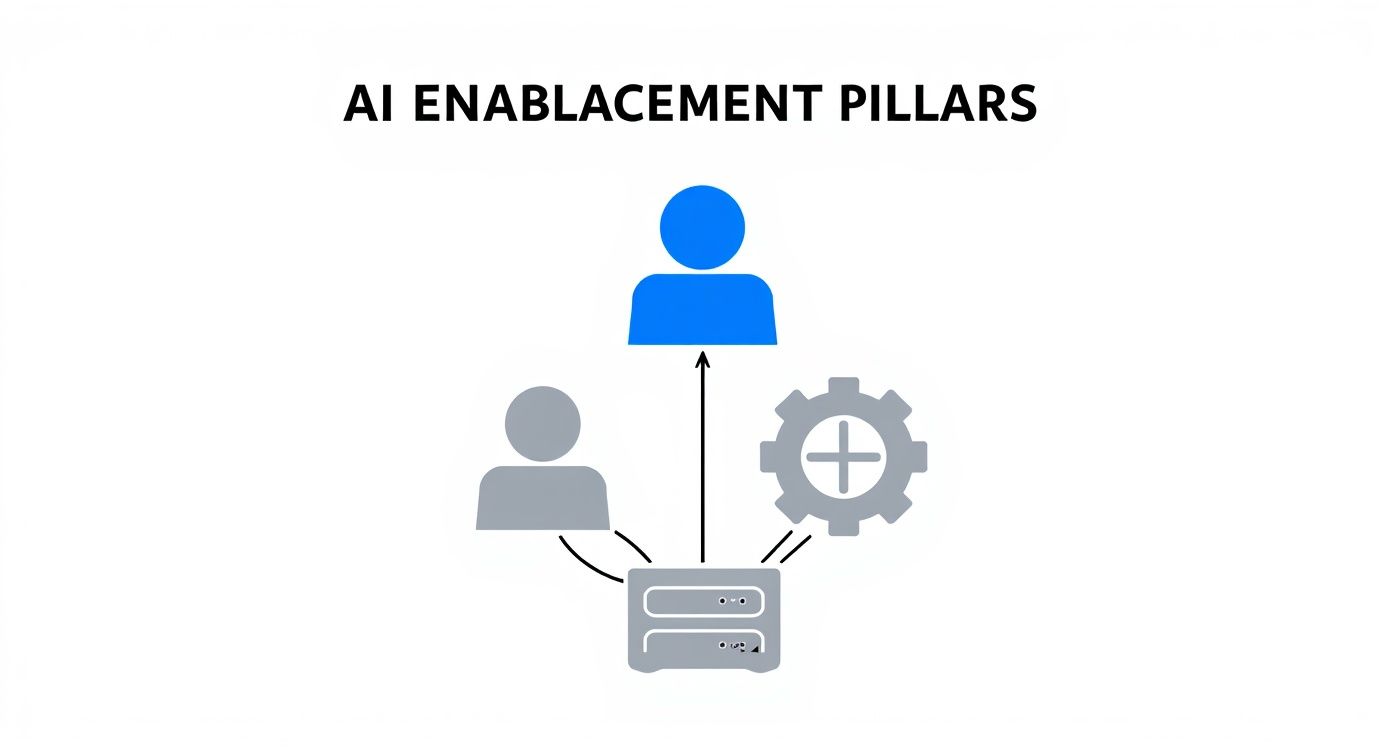
Think of it like a three-legged stool. If any one of those pillars—people, process, or platform—is weak, the whole strategy wobbles.
AI for Creative Marketing and Content
Is your marketing team spending more time on repetitive tasks than on big-picture creative work? This is a perfect opportunity for generative AI. These tools are fantastic for brainstorming, drafting initial content, and automating routine tasks, freeing up your team's creative energy for what matters most.
Imagine this: instead of staring at a blank page, your content writers use an AI tool to generate five different blog post outlines based on a single keyword. They pick the best one and then use their expertise to flesh it out with unique insights and your brand’s voice. This doesn’t replace their skill; it multiplies their output.
- Practical Example: A social media manager uses a generative AI tool to create ten different image and copy variations for an upcoming ad campaign. This used to take half a day; now it takes 20 minutes. The AI handles the volume, while the manager focuses on analyzing the results to refine their strategy.
AI for Smarter Sales Forecasting
For sales teams, uncertainty is the enemy. This is where predictive analytics comes into play. These AI models sift through historical data—past deals, customer interactions, market trends—to spot patterns and forecast future outcomes with impressive accuracy. It’s like giving your sales leader a data-driven crystal ball.
Instead of relying solely on gut feelings, your team can use predictive AI to prioritize leads that are most likely to close, identify customers at risk of churning, and set more realistic sales targets. This shifts your sales process from reactive to proactive, which directly impacts the bottom line. You can find a variety of powerful AI data analysis tools that can handle this heavy lifting.
As one seasoned technology consultant, Maria Chen, puts it, "Enablement is the missing link in most AI adoption strategies. Employees need more than access; they need the skills, confidence, and support to use AI effectively."
This hits the nail on the head. The best tool in the world is useless if your team isn't equipped and confident enough to use it.
AI for Top-Tier Customer Service
Is your customer service team bogged down by the same basic questions over and over? Natural Language Processing (NLP) tools, like intelligent chatbots and automated email responders, can be a game-changer. These systems understand and respond to human language, allowing them to handle routine inquiries around the clock.
This frees up your human agents to focus on complex, high-emotion customer issues where their empathy and problem-solving skills are truly needed. The end result is a more efficient support system and happier customers who get instant answers to simple questions.
- Practical Example: An e-commerce company implements an NLP-powered chatbot on its website. The bot handles over 60% of incoming queries about order status and return policies, which cuts down wait times and lets human agents resolve complicated shipping issues.
How AI Enablement Drives Real Business Results
Theory and frameworks are one thing, but what does AI enablement actually look like when the rubber meets the road? It’s all about tangible outcomes—solving real-world problems and creating measurable value. Let's move past the buzzwords and look at some true stories of businesses that got it right.
These examples show how a thoughtful enablement strategy turns AI from a fascinating concept into a powerful engine for business growth.
A Retailer Personalizes the Customer Journey
Imagine a mid-sized e-commerce retailer struggling to be heard. Their generic, one-size-fits-all email blasts were landing with a thud, leading to dismal engagement and flat sales. They knew personalization was the answer, but their customer data was a complete mess, scattered across a dozen different systems.
Their first move wasn't to buy shiny new software; it was to focus on enablement. They brought together a small team from marketing and IT to tackle the data problem, cleaning and centralizing it. Only then did they train the marketing team on a predictive analytics tool, emphasizing not just how to use it, but why—how to interpret the AI’s suggestions to craft genuinely compelling offers for individual customers.
The results came fast. By using AI to predict which products a customer was most likely to buy next, a new targeted campaign delivered a 22% uplift in repeat purchases in just one quarter. The team felt empowered, the process became smarter, and the technology delivered a clear return on investment.
A Manufacturer Cuts Costly Downtime
For a large manufacturing firm, unplanned equipment failure was a massive financial black hole. Every time a critical machine went down, it threw production schedules into chaos and triggered expensive emergency repairs. They had to get out of the reactive "fix it when it breaks" cycle.
Their enablement strategy centered on predictive maintenance. They started by outfitting their most important machinery with sensors to gather real-time performance data. The crucial next step was upskilling their maintenance engineers, teaching them to use a machine learning platform to analyze that data and spot the subtle warning signs of a potential failure.
As one expert in industrial AI noted, "This shift in thinking is critical. Enablement isn't just about giving people a new tool; it's about giving them a new way to see and solve old problems. When teams are equipped to anticipate issues, they become proactive problem-solvers."
Within six months, the company slashed unexpected equipment downtime by an incredible 40%. The AI didn't replace the engineers; it gave them superpowers, allowing them to schedule maintenance long before a breakdown could ever happen. To see more ways AI is changing the game, check out our guide on the practical applications of artificial intelligence.
A Healthcare Provider Automates Administration
In a busy healthcare clinic, administrative overload was burning out the clinical staff. Skilled nurses and medical assistants were losing hours every day to manual tasks like transcribing doctors' notes, scheduling follow-ups, and processing paperwork. This was valuable time stolen directly from patient care.
The clinic’s leadership decided to introduce Natural Language Processing (NLP) tools to automate these routine jobs. Critically, they first ran a pilot program with a small group of nurses to test the tools and provide feedback. This collaborative process built trust and made sure the final workflow was genuinely helpful, not just another piece of tech to learn.
Now, the AI listens to patient-doctor conversations (with full consent), automatically drafts visit summaries, populates medical records, and queues up follow-up appointments. This single change freed up each nurse for an average of 5 extra hours per week to focus on what they do best: caring for patients.
These success stories aren't outliers. By 2025, AI adoption in sectors like healthcare and manufacturing is growing by up to 20% annually. In telecom and IT, similar applications are contributing up to $4.7 trillion in value. You can discover more insights about these powerful AI adoption trends on CoherentSolutions.com.
Navigating the Common Hurdles of AI Adoption
Kicking off an artificial intelligence enablement initiative is exciting, but let's be real—it's never a straight shot to success. Like any major shift in business, bringing AI into the fold comes with its own set of very human and technical speed bumps. Knowing what these are ahead of time can mean the difference between a stalled project and a real breakthrough.
Think of it like learning to sail. You can have the best boat on the water, but if you don't know how to read the winds or navigate the currents, you’re not going to get very far. Let’s break down the most common challenges and talk about how you can steer your team through them.
The Data Quality Dilemma
Here’s a hard truth: the most common reason AI projects fail has nothing to do with the AI itself. It’s the data. An AI model is only as smart as the information it learns from. If you feed it incomplete, messy, or biased data, you'll get unreliable and skewed results back. It’s the classic "garbage in, garbage out" problem, supercharged.
Too many organizations discover this the hard way, realizing their most critical data is scattered across disconnected spreadsheets, ancient databases, and siloed department software. Before you can even dream about advanced AI, you have to get your data house in order. This often means putting in the time upfront to clean, organize, and centralize your information so the AI has a solid, trustworthy foundation to work with.
Bridging the Internal Skills Gap
Another major hurdle is the talent right inside your own building. You can’t just hand a sophisticated AI tool to your team and expect them to become experts overnight. Without the right training and support, employees will either ignore the new tech or use it incorrectly, leading to a lot of frustration and wasted money.
This isn’t just about technical know-how, either. It’s about building company-wide "AI literacy"—helping everyone understand what AI can (and can't) do for their specific role.
- For Marketing: Training might focus on writing effective prompts for generative AI to create better ad copy.
- For Sales: The focus could be on interpreting data from a predictive analytics tool to spot the most promising leads.
- For Operations: It might involve learning how to monitor an AI system that flags issues on the production line.
The goal is to empower your people, not overwhelm them. Start small with role-specific training that delivers an immediate win.
Overcoming Resistance to Change
Let’s talk about the elephant in the room: fear. When employees hear "AI," many immediately worry, "Is a robot going to take my job?" This is a completely natural human reaction to uncertainty, and if you ignore it, your AI initiatives are probably doomed from the start.
Change management experts always stress the importance of framing AI as a partner, not a replacement.
"The most successful AI adoptions happen when leadership communicates a clear vision of AI as a 'co-pilot,'" explains one expert. "The goal isn't to replace human expertise but to augment it, freeing people from tedious tasks so they can focus on creativity, strategy, and complex problem-solving—the places where they truly shine."
Show, don't just tell. Kick things off with a small, highly visible pilot project that clearly shows how AI can make a painful process easier. When the finance team sees an AI tool cut their month-end reporting time in half, they become your biggest advocates, not adversaries.
The Complexities of Ethical and Secure AI
Finally, using AI responsibly brings a whole new layer of complexity to the table. The ethical implications are huge. For instance, if an AI model used for hiring shows bias against certain groups, it can create serious legal and reputational damage. At the same time, AI systems often handle sensitive customer or company data, making them a prime target for security threats.
Developing strong governance from day one is simply non-negotiable. This means creating clear policies around:
- Data Privacy: How will customer and employee data be protected?
- Transparency: How will you explain the way your AI models make decisions?
- Accountability: Who is responsible when an AI system gets something wrong?
Building a secure and ethical framework isn't an afterthought; it’s a foundational piece of AI enablement. To get ahead of these risks, it’s smart to review established AI security best practices and bake them into your strategy from the very beginning. This proactive approach builds trust with both your employees and your customers.
Your First Steps in Artificial Intelligence Enablement

Starting your artificial intelligence enablement journey can feel like standing at the base of a mountain. It’s tempting to feel overwhelmed, but the reality is you don't have to conquer it all at once. The smartest AI initiatives I’ve seen all start the same way: with a simple, focused roadmap broken into three manageable phases: Assess, Pilot, and Scale.
This methodical approach keeps you from getting bogged down and helps build real momentum with early, tangible wins. Let's walk through what those first steps actually look like.
Phase 1: Assess and Identify a Quick Win
Before you write a single line of code or sign up for any software, you need to find the right problem to solve. The goal here isn't to reinvent the wheel. It's to find one high-impact, low-complexity issue where AI can deliver a clear and immediate victory.
Look for the nagging, repetitive tasks that create obvious bottlenecks in your day-to-day operations.
- Is your support team drowning in the same five questions over and over?
- Does your marketing department spend days manually crunching numbers to find campaign insights?
- Is your operations team still trying to forecast inventory with clunky spreadsheets?
Picking a pain point that everyone recognizes—and wants gone—is the perfect place to start. A quick win here does more than just solve a problem; it builds internal confidence and creates advocates who will champion AI's value from the inside.
Phase 2: Pilot a Focused Project
Once you have your target, it's time for a small, controlled experiment. Think of the pilot phase as your test kitchen. You're not trying to overhaul the entire company's workflow; you're just testing one new recipe with a small, dedicated group.
Choose a single AI tool that directly tackles the problem you identified in the Assess phase. Then, pull together a small group of enthusiastic team members to try it out. Your job is to give them the training and support they need, but also the freedom to play around and give you their honest, unfiltered feedback.
An expert tip here: this pilot is less about the technology and more about learning. You're gathering invaluable, real-world data on how your team actually interacts with AI, where the friction points are, and what a successful, wider rollout will demand.
The insights you get at this stage are pure gold. They will shape your entire strategy and help you sidestep costly missteps when it’s time to expand.
Phase 3: Scale with Confidence
After your pilot project delivers a measurable win, you have a powerful story to tell. You’ve got data, you've got testimonials from the pilot team, and you’ve got a clear business case for a broader rollout. Now, you can move to the Scale phase with genuine confidence.
Use what you learned from the pilot to build a more complete implementation plan. This means creating standardized training materials, setting up clear governance, and mapping out a phased introduction to other teams or departments. This initial success story becomes the bedrock for building a wider, organization-wide artificial intelligence enablement strategy.
Mainstream adoption of these tools is accelerating at an incredible pace. In 2025, the global user base for AI tools is projected to hit 378 million people—a massive jump in just a few years. You can see more data about the worldwide growth of AI tools on netguru.com. By starting small and scaling smart, you position your organization to be a part of that growth, not just a spectator.
A Few Lingering Questions About AI Enablement
Stepping into the world of AI enablement can feel a little foggy at first. That's perfectly normal. Let's clear up some of the most common questions that pop up when teams start thinking about bringing AI into their daily work.
So, How Much Should We Actually Budget for This?
This is the big one, isn't it? The honest answer is: it completely depends on your goals. A small business dipping its toes in the water with a single AI chatbot for customer support will have a completely different budget than a large company overhauling its entire analytics platform.
Instead of looking for a single price tag, it’s much more helpful to think about the budget in three distinct buckets:
- The Tech: This is the obvious part—the AI software itself, any cloud services you need, and potential data storage upgrades.
- The People: Don't forget this crucial piece. You'll need to set aside funds for training programs, workshops, and maybe even bringing in someone with specialized skills.
- The Process: This covers the time and resources needed for the initial audit, figuring out how to redesign workflows, and keeping the project running smoothly.
What New Roles Will We Need to Hire?
You can probably breathe a sigh of relief here. You likely don’t need to go on a hiring spree and build a whole new department from scratch. A much better approach is to create a small, cross-functional "AI council" or "enablement team."
Pull people from different corners of your business. You’ll want someone from IT who gets the technology, a project manager to keep the train on the tracks, and a few champions from departments like marketing or operations—the people who will actually use the new tools every day. Their mission is to lead the charge and share honest, on-the-ground feedback.
As one technology consultant often advises, "Your first 'AI hires' should be internal champions. Find the curious, motivated people already on your team and empower them. They understand your business context better than any outside hire ever could."
How Do We Know if AI Enablement is Actually Working?
Knowing if your efforts are paying off is the key to building and keeping momentum. You have to look past flashy numbers and zero in on real, tangible business results. The trick is to tie your Key Performance Indicators (KPIs) directly back to the original problem you were trying to solve.
Let’s get specific:
- If you implemented a customer service AI: Are you seeing a measurable drop in response times? What percentage of simple questions is the bot now handling on its own?
- If you adopted a sales forecasting tool: How much more accurate are your forecasts? Have your lead conversion rates improved?
- If you’re using a marketing content generator: By how much has it cut down the time spent on writing first drafts? Are you publishing more content?
When you track these kinds of specific outcomes, you build an undeniable case for the value of your artificial intelligence enablement initiative.
Ready to dive deeper into the world of AI and discover the tools that can propel your business forward? At YourAI2Day, we provide the latest news, guides, and insights to help you make sense of it all. Visit us at https://www.yourai2day.com to learn more.
